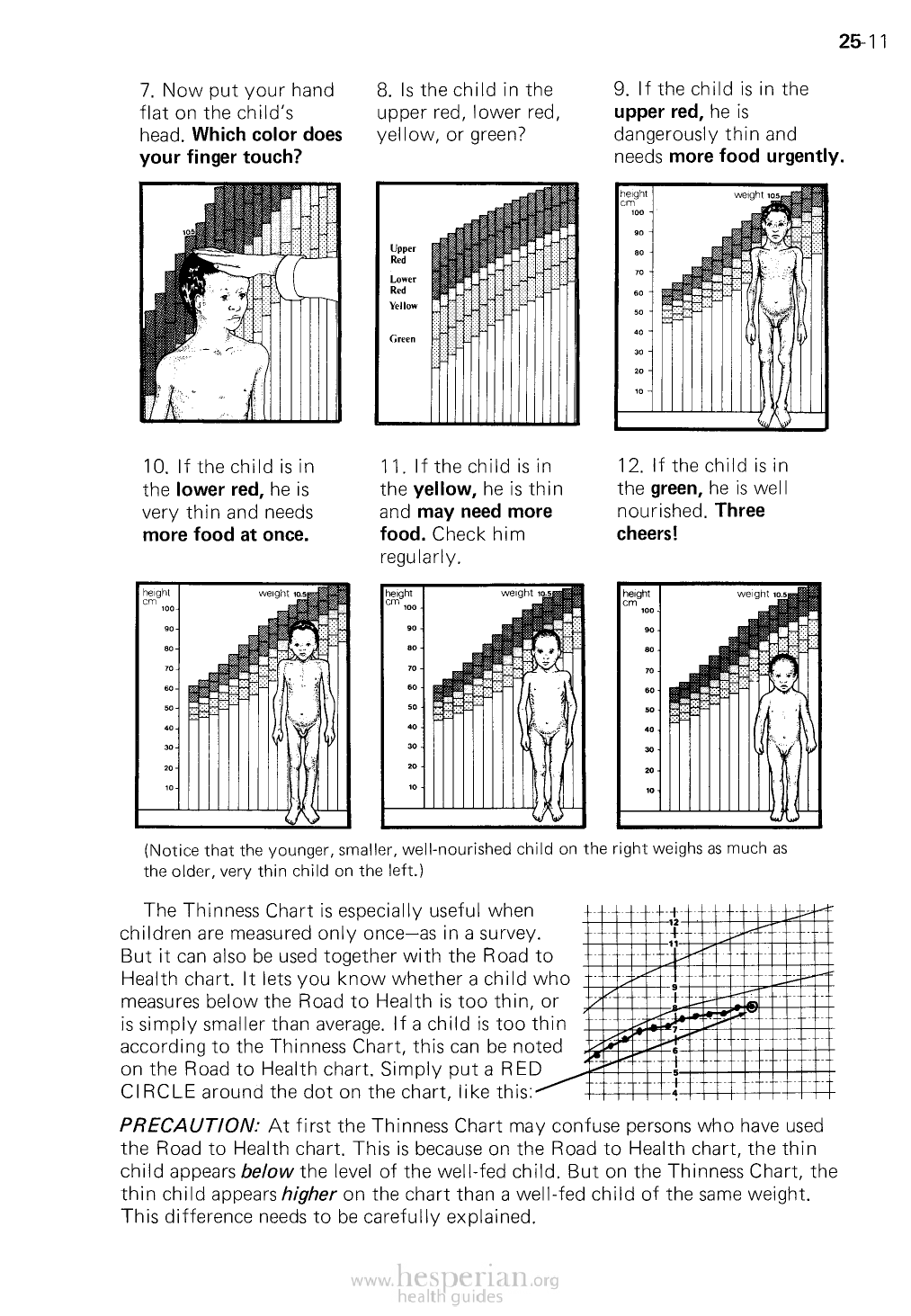
7. Now put your hand
flat on the child’s head.
Which color does your
finger touch?
8. Is the child in the
upper red, lower red,
yellow, or green?
25-11
9. If the child is in
the upper red, he is
dangerously thin and needs
more food urgently.
10. Ifthechildisinthe
lower red, he is very
thin and needs more
food at once.
11. If the child is in
the yellow, he is thin
and may need more
food. Check him
regularly.
12. 12. If the child
is in the green, he
is well nourished.
Three cheers!
(Notice that the younger, smaller, well-nourished child on the right weighs as much as the
older, very thin child on the left.)
The Thinness Chart is especially useful when
children are measured only once—as in a survey.
But it can also be used together with the Road to
Health chart. It lets you know whether a child who
measures below the Road to Health is too thin, or
is simply smaller than average. If a child is too thin
according to the Thinness Chart, this can be noted
on the Road to Health chart. Simply put a RED
CIRCLE around the dot on the chart, like this:
PRECAUTION: At first the Thinness Chart may confuse persons who have used
the Road to Health chart. This is because on the Road to Health chart, the thin child
appears below the level of the well-fed child. But on the Thinness Chart, the thin
child appears higher on the chart than a well-fed child of the same weight. This
difference needs to be carefully explained.